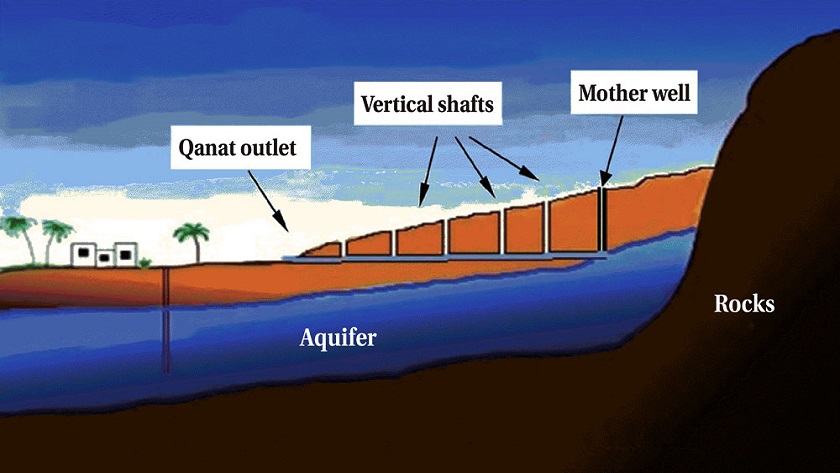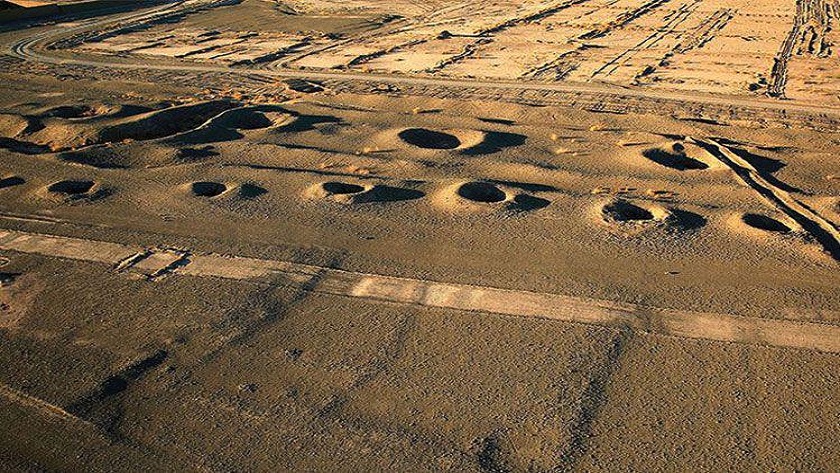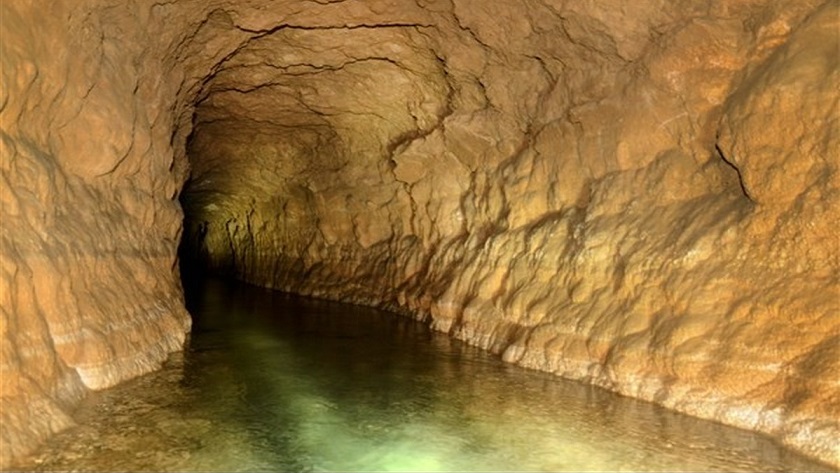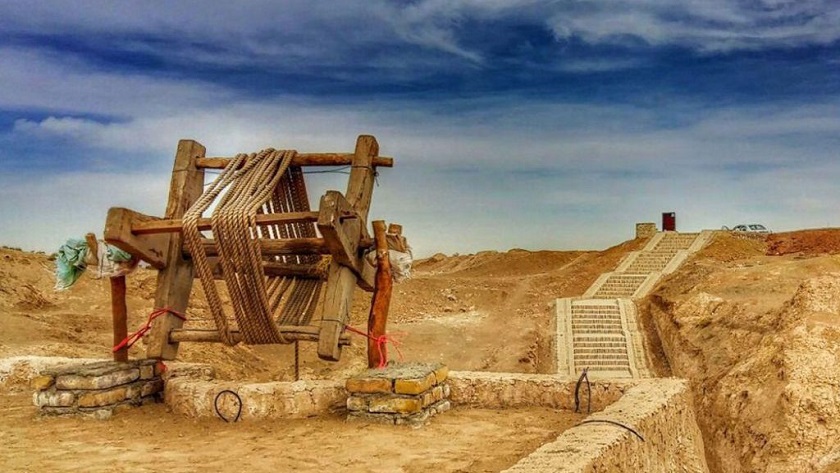Iran Press/ Iran News: The qanat or kariz in Iran is an ancient Persian irrigation technique in which a long tunnel is dug into arid land that allows water from underground aquifers to be accessed for use by the local population, supporting large settlements in spite of hostile environmental conditions. Qanats begin as deep wells dug into elevated land and culminate in streams flowing through outlets into a human settlement.
 How Qanat works
How Qanat works
A qanat taps underground mountain water sources trapped in and beneath the upper reaches of alluvial fans and channels the water downhill through a series of gently sloping tunnels, often several kilometers long, to the places where it is needed for irrigation and domestic use. The development of qanāts probably began about 2,500 or 3,000 years ago in Iran, and the technology spread eastward to Afghanistan and westward to Egypt.
Related News:
Persepolis mysterious stone complex in the World
 An old Kariz or qanat in Iran
An old Kariz or qanat in Iran
British researchers believe that the construction of the aqueduct dates back to several different periods. At first, the aqueduct was built by Iranians. Influenced by the innovations of the Iranian people, the Romans then built an aqueduct-like water network during their rule in Egypt.
According to Iranian archaeologists, the remains of an irrigation system found in 2014 near the Seymareh Dam in Ilam province date back to the fourth millennium BC.
Related News:
Valashan pigeon towers; symbol of ancient architecture in Isfahan
If the information obtained from these findings is correct, the main source of the aqueduct construction can be understood. If the correct date of the remnants of the irrigation system in Seymareh Dam is confirmed, it shows that the first aqueduct was not only discovered in the first millennium BC but also used by humans two thousand years ago before that.
 Qanat keeps the water cold and preserves it from evaporation
Qanat keeps the water cold and preserves it from evaporation
The Persian Qanat system is an exceptional testimony to the tradition of providing water to arid regions to support settlements. The technological and communal achievements of the qanats play a vital role of qanat in the formation of various civilizations. Its crucial importance for the larger arid region is expressed in the name of the desert plateau of Iran which is called “Qanat Civilisation”. Dispersion of primary settlements on alluvial fans of the inner plateau and deserts of Iran is immediately related to the distribution pattern of the qanat system across the country. The system also presents an exceptional living cultural tradition of communal management of water resources.
Related News:
Kerman's Ganjali Khan Bathhouse; masterpiece of Iranian architecture
 A well on the pathway of Qanat
A well on the pathway of Qanat
Qanats could be as short as 1 km (3,280 ft) or as long as 50 km (31 mi), but they always attracted settlers with a consistent water supply. In many cases, the qanat could be used to identify social status. The Middle East is one of the driest areas in the world, containing regions where rainfall remains below 50 mm (1.9 in) annually. Such low levels of water supply are incapable of sustaining a growing population, which is why the Persians found such an innovative way to access groundwater.
 Qanat's main function was to transfer water efficiently
Qanat's main function was to transfer water efficiently
Despite advancements in technology over time, qanats have remained a reliable source of water for Iran from the first millennia BCE to the present time. Today, there are still over 30,000 qanats in Iran. Even now, these qanats bring a substantial water supply to compensate for the lack of rainfall. For example, the Gonabad qanat system in Khorasan Province was built around the 6th century BCE by the Achaemenids, yet this long complex of tunnels, wells, and outlets remains in use today.
Related News:
Sirjan twin Iceboxes; glory of Iranian architecture
Outlets extending from the Gonabad system can discharge up to 150 l/s (39 gal/s), allowing for the irrigation of 150 hectares (370 acres) of agricultural land. Likewise, over 3,000 qanats in Yazd are still functioning today. Some are over 1,000 years old. The Yazd qanats discharge around 340 million cubic meters (over 92 billion gallons) of water each year, supplying around 25% of the province's total groundwater. This is an amazing accomplishment considering the 60 mm (2.4 in) of total rainfall that Yazd receives each year.
Legacy of the Qanat
The reliable supply of water made possible by qanat technology helped transform the Middle East and contributed to globalizing trade routes by allowing settlements and trading posts to be established in the arid regions of the Middle East, North Africa, and Western China.
219
Read More:
Deyre Gachin Caravanserai; beauty of Iranian historical architecture
Ashkan Salehian

